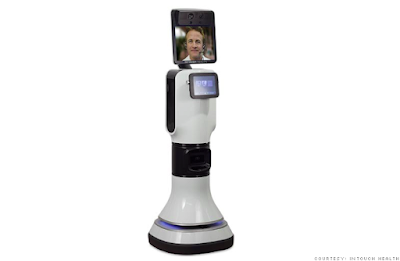The following information is from a PRWeb press release announcing the winners of the Fourth Annual KAPi Awards:
Living in Digital Times and Children's Technology Review Announce 2013 KAPi Award Winners The Most Innovative in Children's Technology to be honored on Thursday, January 10, at the 2013 International CES ® in Las Vegas
"Collaboratively organized and produced by Living in Digital Times and Children’s Technology Review, the fourth annual KAPi Kids at Play Awards honor the best of the best in children’s technology."- PRWeb, 12/18/12
The 2013 KAPi Award Winners Are…
1. Best Younger Children’s App: LetterSchool by Boreaal Publishers
2. Best Older Children’s App: IMAG-N-O-TRON by Moonbot Studios
3. Best Tech Leveraged Toy: Skylanders Giants by Activision
4. Best Video Game Software: Kinect Sesame Street TV by Microsoft Studios
5. Best Hardware or Peripheral: Kindle Fire HD with Kindle FreeTime Unlimited by Amazon
6. Best Technology Toy: littleBits by littleBits Electronics
7. Best Educational Technology: BrainPOP GameUp by BrainPOP LLC.
8. Innovation: The Cube by 3D Systems, Inc. (3D Printer)
9. Pioneer: Dale Dougherty, Co-Creator, Maker Faire; Publisher, MAKE Magazine
10. Pioneering Team: Toca Boca
Judges of the KAPi Awards consisted of 13 journalists and/or experts in children’s interactive media, they were:
Warren Buckleitner, Children’s Technology Review
Chris Crowell, Children’s Technology Review
Dan Donahoo, Wired GeekDad and Project Synthesis
Chip Donohue, Erikson Institute
David Kleeman, American Center for Children and Media
Ann McCormick, Co-Founder, The Learning Company
Frank Migliorelli, Mig Idea
Robin Raskin, Living in Digital Times
Reyne Rice, Toy Expert
Carly Shuler, PlayScience
Andrea Smith, Mashable
Aleen Stein, Organa
Scott Traylor, 360 Kid
Living in Digital Times and Children's Technology Review Announce 2013 KAPi Award Winners The Most Innovative in Children's Technology to be honored on Thursday, January 10, at the 2013 International CES ® in Las Vegas
"Collaboratively organized and produced by Living in Digital Times and Children’s Technology Review, the fourth annual KAPi Kids at Play Awards honor the best of the best in children’s technology."- PRWeb, 12/18/12
The 2013 KAPi Award Winners Are…
1. Best Younger Children’s App: LetterSchool by Boreaal Publishers
2. Best Older Children’s App: IMAG-N-O-TRON by Moonbot Studios
3. Best Tech Leveraged Toy: Skylanders Giants by Activision
4. Best Video Game Software: Kinect Sesame Street TV by Microsoft Studios
5. Best Hardware or Peripheral: Kindle Fire HD with Kindle FreeTime Unlimited by Amazon
6. Best Technology Toy: littleBits by littleBits Electronics
7. Best Educational Technology: BrainPOP GameUp by BrainPOP LLC.
8. Innovation: The Cube by 3D Systems, Inc. (3D Printer)
9. Pioneer: Dale Dougherty, Co-Creator, Maker Faire; Publisher, MAKE Magazine
10. Pioneering Team: Toca Boca
Judges of the KAPi Awards consisted of 13 journalists and/or experts in children’s interactive media, they were:
Warren Buckleitner, Children’s Technology Review
Chris Crowell, Children’s Technology Review
Dan Donahoo, Wired GeekDad and Project Synthesis
Chip Donohue, Erikson Institute
David Kleeman, American Center for Children and Media
Ann McCormick, Co-Founder, The Learning Company
Frank Migliorelli, Mig Idea
Robin Raskin, Living in Digital Times
Reyne Rice, Toy Expert
Carly Shuler, PlayScience
Andrea Smith, Mashable
Aleen Stein, Organa
Scott Traylor, 360 Kid




